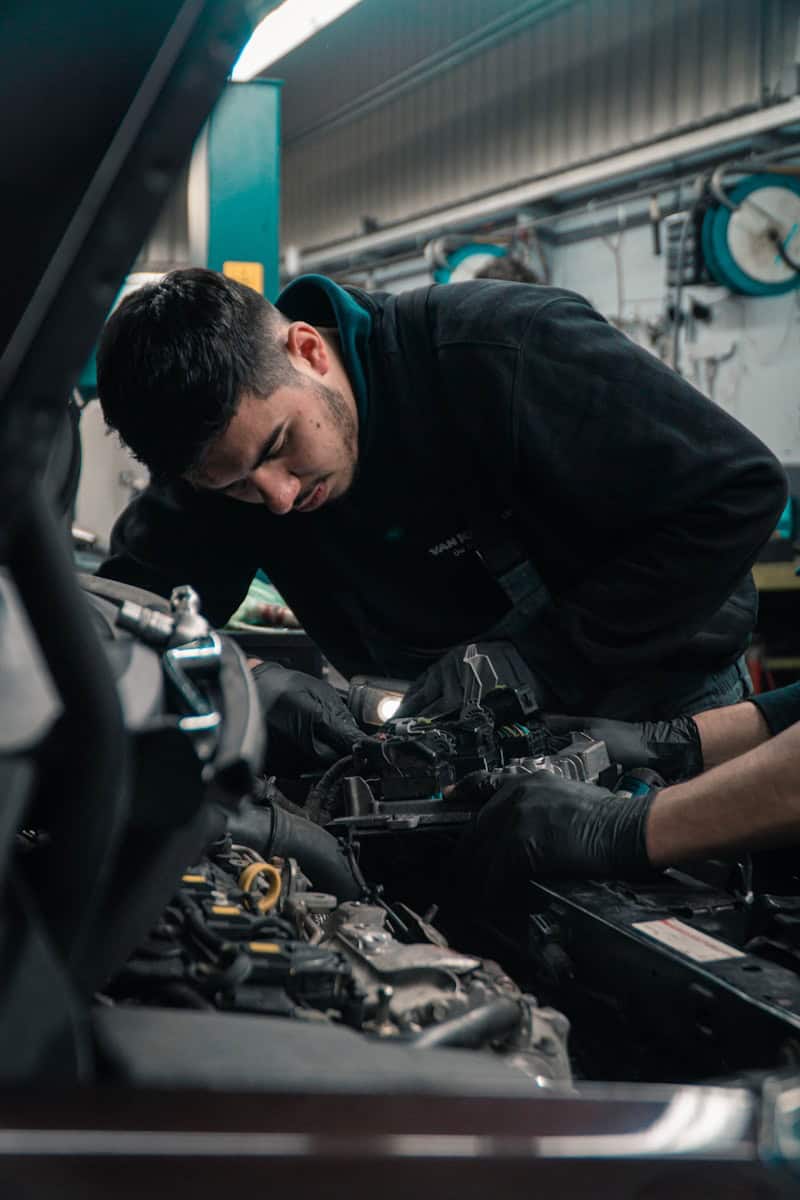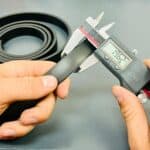When your car’s check engine light turns on, it can be worrisome. The light could mean a simple fix or something more serious. If your car shows the engine code P0456, it means that there is a small leak in the EVAP system. The EVAP system keeps gas fumes from reaching the air we breathe.
A small leak might not seem like a big deal. But it can affect how your car runs and it’s not good for the environment. The leak can come from a loose gas cap or even a small hole in a hose. Mechanics can use special tools to find and fix these leaks. It is important to address the P0456 code early. Ignoring the check engine light can lead to more problems later. By finding and fixing the issue, your car will run better. You will also help keep the air clean.
Dealing with P0456: Your Guide to EVAP System Leaks
P0456 – a code that might seem like gibberish, but it’s your car’s way of saying there’s a small leak in its evaporative emission control (EVAP) system. While not an immediate threat to your engine, addressing it is vital for fuel efficiency and keeping your car running smoothly.
Understanding the EVAP System
Let’s break down what this system does:
- Purpose: The EVAP system prevents fuel vapors from escaping into the atmosphere. These vapors are harmful pollutants.
- Components: The system includes the fuel tank, gas cap, charcoal canister, various hoses, and a purge valve.
- How it Works: It captures fuel vapors, stores them in the charcoal canister, and later releases them back into the engine to be burned.
Why P0456 Matters
A small leak in this system can lead to:
- Reduced Fuel Efficiency: Those escaping vapors are wasted fuel.
- Fuel Odor: You might notice a gas smell inside or around your car.
- Check Engine Light: The P0456 code will trigger your car’s “Check Engine” light.
Common Culprits Behind P0456
Here’s a table outlining the usual suspects:
| Component | How it Fails |
|---|---|
| Gas Cap | Loose, damaged, or worn seal |
| Purge Valve | Stuck open or closed, causing incorrect vapor flow |
| Charcoal Canister | Cracked or leaking, can’t store vapors properly |
| Hoses and Lines | Cracked, loose, or damaged hoses allow vapors to escape. |
Addressing P0456: What to Do Next
- Check the Gas Cap: Make sure it’s tightly secured and the seal is in good condition.
- Visual Inspection: Look for cracked hoses, loose connections, or damage to the charcoal canister.
- Professional Diagnosis: If you can’t find the leak, take your car to a mechanic. They have specialized tools to diagnose and repair EVAP system leaks.
Don’t ignore the P0456 code. Fixing the problem early can save you money on gas and prevent future issues.
Understanding P0456 Code
The P0456 code is a specific OBD-II trouble code that points to a small leak in the evaporative emission control system. This leak can affect how your car handles fuel vapors.
Origins of P0456 Code
P0456 is an Engine Control Module (ECM) diagnostic trouble code. It appears when the ECM finds a very small leak in the evaporative emissions system. This system prevents fuel vapors from getting into the air.
Symptoms and Detection
Key symptoms of a P0456 code may include:
- An illuminated Check Engine Light
- A possible fuel odor
Detection involves the ECM performing tests. It checks for leaks by monitoring pressure changes. If it finds a small leak twice, it turns on the Check Engine Light.
Possible Causes and Common Culprits
Common causes for a P0456 code include:
- Loose gas cap: It’s the simplest culprit to fix.
- Faulty EVAP hose: These can crack or loosen over time.
Other parts like valves or connectors can also fail and cause this code. These issues lead to the ECM detecting a small leak.
Implications on Vehicle Performance
A small leak may not change how the car drives right away. Yet it can lead to a failed emissions test. Over time, it may affect fuel economy. It is important to address the P0456 code to keep the car running clean and efficient.
Diagnostic and Repair Procedures
When the code P0456 appears, it points to a small leak in the evaporative emission system. Fixing this can help your car run better and keep the environment clean.
Professional Diagnostic Steps
A mechanic will check your car’s evap system first with a tool called a smoke machine. This shows where the vapors are escaping. They’ll look at key parts like the gas cap and the hoses that connect to the fuel tank. A smoke test helps find leaks that are too small to see.
DIY Troubleshooting and Repairs
If you plan to check things yourself, start simple. First, check the gas cap. Make sure it’s on tight. If it looks broken, replace it. Next, use a hand-held vacuum pump to test the purge valve and vent valve. These should hold the vacuum if they’re good.
Replacement Parts and Repair Methods
Leaks come from faulty parts. Common ones to change are the gas cap, purge valve, vent valve, and any cracked hoses. To replace a part, remove the old one and put the new one in the same spot. Always make sure the replacement parts match your car’s make and model.
Finalizing the Fix
After changes, clear the trouble code with a scanning tool. Then, drive your car for a while to make sure the code doesn’t come back. This drive cycle tests to make sure the fix worked.
Preventative Measures and Best Practices
Keep your car’s evap system in good shape to avoid issues. Check the gas cap after you fill up. Replace it when it gets old or if the seal is worn. Regularly check the evap system hoses and replace them if they look cracked or worn.
Remember, fixing a P0456 is important to keep your car running right and for passing emissions tests.
Frequently Asked Questions
The “Check Engine” light can lead to many questions. This engine code P0456 points to a leak in the evaporative emission system. Here are some answers to the most common questions.
What steps are involved in fixing an evaporative emission system leak indicated by OBD code P0456?
First, inspect hoses and gas cap for damage. They may need a simple fix. If not, a mechanic can run more tests. They can repair or replace faulty parts.
Will a P0456 OBD code resolve on its own or require manual clearing?
This code will not clear on its own. After a fix, the code needs clearing with a scan tool. Or it may turn off after several successful car trips.
What are the implications of continuing to drive a vehicle displaying an OBD code P0456?
Driving with code P0456 can be risky. The leak might worsen. It can harm the fuel system and the environment. It’s best to fix it soon.
How much can one expect to pay for repairs associated with a P0456 diagnostic trouble code?
Repair costs for P0456 vary. It might be a cheap gas cap or more for part replacement. Labor costs also add to the total.
What is typically the most common cause behind a P0456 OBD code detection?
A loose or faulty gas cap often causes this code. It’s the simplest part to check and replace if needed.
Are there different troubleshooting approaches for a P0456 OBD code concerning different vehicle brands?
While the code is the same, some car brands might have unique fixes. Each vehicle has its own design for the evaporative emission system. It’s good to check the car’s repair manual or talk to a mechanic who knows your car brand well.







